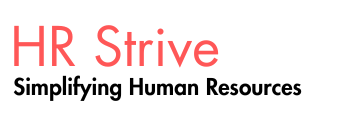In today’s interconnected world, HR professionals are increasingly called to lead in workplaces that cross cultures, countries, and time zones. Embracing a global mindset isn’t just an added advantage — it’s a fundamental competency. It allows HR practitioners to operate with cultural intelligence, balancing global standards with local sensitivities.
What It Means to Think Globally
At its heart, a global mindset is the ability to recognize, respect, and respond to cultural differences. It starts with understanding how people from different backgrounds see the world — from food and fashion to values and systems of law. It’s not just about surface-level differences, but about appreciating the deeply rooted instincts that guide behavior.
An HR leader with a global outlook can bridge cultural gaps, design inclusive policies, and foster a truly diverse workplace. They use people processes not only to manage talent, but to build unity across borders.
Key Ways HR Professionals Apply a Global Mindset
Some clear signs that HR practitioners are developing and applying a global mindset include:
-
Leveraging knowledge of global market shifts and cultural dynamics when designing HR programs.
-
Championing diversity and inclusion through policy development, awareness-building, and training.
-
Making sure HR policies are applied equitably and respectfully across all employee groups.
-
Balancing a global strategic view with local operational needs.
-
Advocating for inclusive hiring, advancement, and engagement strategies.
-
Integrating the organization’s DE&I philosophy into everyday business and people decisions.
-
Aligning global HR strategies with cultural competencies to enhance organizational success.
-
Understanding and promoting the link between inclusive practices and performance outcomes.
-
Building fair and consistent practices for staff across all levels.
-
Driving a company culture that not only accepts but celebrates cultural variety and inclusion.
Putting Global Thinking Into Practice: A Real-World Example
Let’s look at how one HR leader tackled cultural complexities in a joint venture (JV) between a U.S.-based tech firm and a Japanese technology company. While the American team sought to acquire new wireless technology, the Japanese partner aimed to expand its global footprint.
Although headquartered in the U.S., the JV’s leadership team was mostly Japanese. This brought two distinct work cultures into one space: the structured, collective approach of Japanese salaried workers and the independent, risk-driven spirit of American professionals.
Knowing the cultural gap could block collaboration, the head of HR launched an immersive cultural learning initiative. Each JV project lead was sent to live with their counterpart’s family for three months, creating a deep personal connection and cultural understanding. They also co-developed a cultural orientation session for new hires. A second wave of leaders followed up with shorter immersions, creating a steady flow of cultural ambassadors and reducing dependency on a single person for cross-cultural knowledge.
Why It Matters: The Power of a Global Mindset
A true global mindset means seeing the world through different lenses — not just understanding someone else’s point of view, but building inclusive solutions from it. This goes hand in hand with knowing one’s own cultural lens and realizing that it is just one of many valid ways of thinking.
As Lisbeth Claus describes it, this dual awareness is about living by both the golden rule (treat others as you’d like to be treated) and the global rule (treat others as they would like to be treated).
Brad Boyson adds that global HR leaders eventually stop focusing on national identities and instead see common human patterns first. It’s not about ignoring cultural differences, but embracing them until shared values naturally come into focus — that’s when collaboration really begins.
Organizational Benefits of a Global Mindset
Teams led by globally-minded HR professionals experience clear advantages:
-
Better internal coordination across international teams.
-
Faster sharing of successful practices across regions and partners.
-
Deeper levels of cross-cultural trust and inclusive workplace behaviors.
-
Greater ability to spot international opportunities early — and act quickly.
-
A sharper sense of local expectations and global standards, leading to smoother global rollouts.
How to Build a Global Mindset
Developing this mindset takes time. It’s the result of real-world exposure, learning from mistakes, reflecting, and being open to change. People need to experience the richness of other cultures firsthand to grow in this way.
That said, organizations can do a lot to help. They can:
-
Hire people with existing cross-cultural experience.
-
Design training and mentorship programs that expose staff to different cultural contexts.
-
Encourage curiosity and openness through leadership modeling.
To change mindset and behavior, three ingredients must be present:
-
The right knowledge and skills.
-
A genuine willingness to learn and grow.
-
A supportive organizational environment.
By promoting a global mindset, HR professionals become not just enablers of inclusive workplaces, but strategic drivers of global success. They help build a world where diversity becomes a strength — and not a barrier — to innovation, connection, and progress.

No comments:
Post a Comment